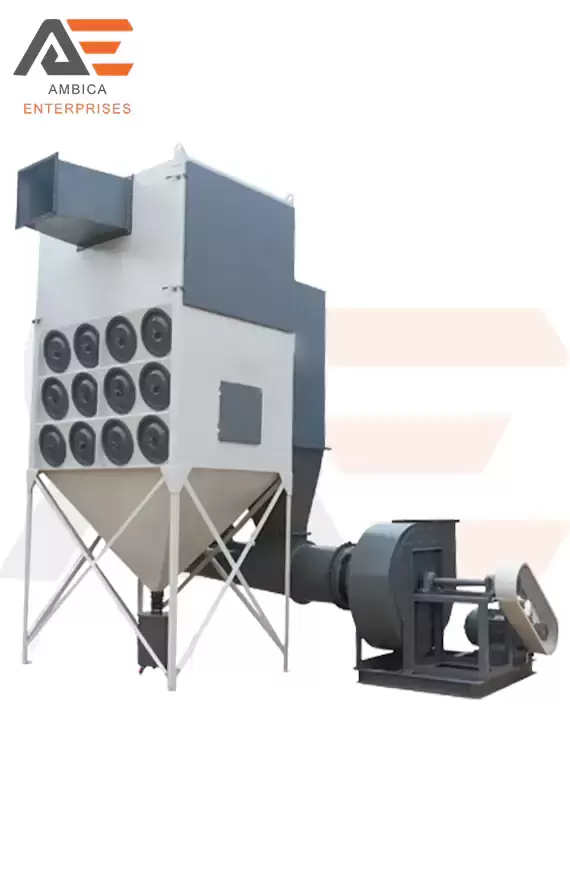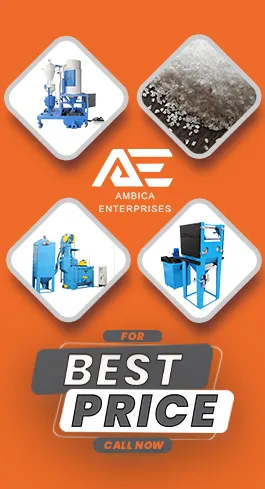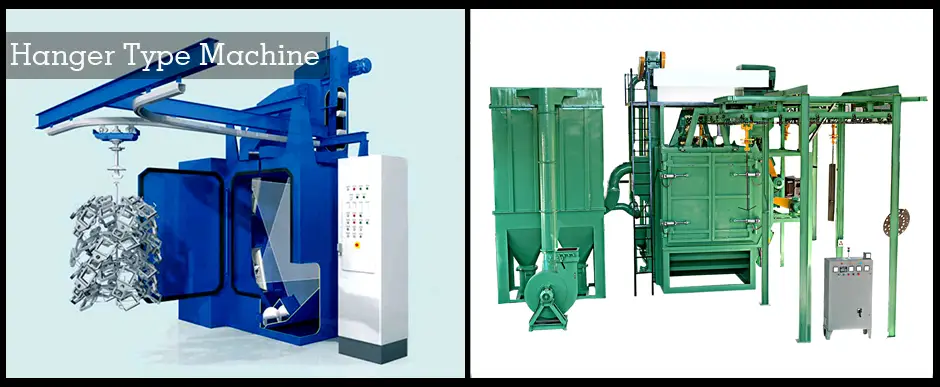
Reverse Pulse Jet Cartridge Filter Dust Collector
Price Range : ₹ 1Lakh - 20Lakh
Air Transport
Sea Transport
Land Transport
- A jet dust collector is a suction filtration device that draws air that has been polluted by dust into a filtration system where particulate matter is collected and cleaned air is released.
- The most popular kind of dust collection device is the jet dust collector because of its effectiveness.
- The final step in the dust collection process for a pulse jet dust collector is the filter.
- Jet dust collectors have become more popular and used as a result of the escalating air quality standards, manufacturer concerns, and society's increased attention to environmental issues.
4.5 Star Rating by our Precious Clients
- More Details
- Call Now
- Get Latest Price
![]()
Leading Supplier & Exporter
![]()
Trustseal Verified
![]()
ISO Certified
![]()
Manufacturer
Reverse Pulse Jet Cartridge Filter Dust Collector cleaning systems are an important component of pneumatic conveying systems because, in a typical pneumatic conveying system, the conveying air is separated in the filter separator and the filters are cleaned by a reverse jet of compressed air. The compressed air pulse jet's short duration helps to dislodge the fine particles attached to the filters. The primary components of the Reverse Pulse Jet Cartridge Filter Dust Collector are as follows: A compressed air reservoir that holds the required amount of air for pulsing, a Pulse Valve with a solenoid valve that opens to inject compressed air into the filters in the opposite direction, A PLC timer controls the frequency of pulsing.
The Reverse Pulse Jet Cartridge Filter Dust Collector used in compressed air systems serves two purposes. The first is to recover as much of the conveyed material as possible, and the second is to minimize pollution. The particle size and bulk density of the product being conveyed heavily influence the design and operation of this equipment.
Reverse Pulse Jet Dust Collector
A bag or cartridge-type fabric filter, either employed on its own or as a secondary or one or more cyclone dust collector, is the technique of filtration that has become almost generally accepted in pneumatic conveying systems handling fine or dusty material. In scenarios where the entire product to be gathered is blasted into a hopper and the clean air is vented off at the top through the filter unit, they might be used as bin vents. The separators are known as dust collectors in specific situations where the powder being carried is fugitive dust, such as "central vacuum cleaning."
Reverse Pulse Nowadays most filter receivers or dust collector in use are cleaned primarily using compressed air. Other cleaning techniques like bag shaking and reverse air cleaning are no longer often employed. The appropriate operation of this system is always essential, regardless of the cleaning method. The product will continue to accumulate on the filters in the absence of a reliable cleaning system. As a result, there will be a greater pressure drop and less conveying air volume at the pick-up points. Additionally, the ductwork's airstream velocities will decline, resulting in a drop-out of dust.
Working of Reverse Pulse Jet Dust Collector
A reverse pulse also known as a pulse jet or reverse jet filter cleaning method is an easy procedure with big effects. The following is a brief explanation of a reverse pulse filter cleaning system: When a dust collector is operating normally, air moves from the filter media's edge to its center. The filter removes the dust, which is then left on the filter's exterior surface. A burst of air compressor is fired down the center of the filter to remove the dust, then it moves outward to clean the filter's surface. The dust is eventually deposited in the collector in a downflow dust collector, such as an A.C.T. dust collector, after being caught by the downward airflow.
At 90 PSI, pulse clean should be in operation. You won't have a better pulse if you increase the compressed air pressure. Your filters and diaphragms may become damaged by too much pressure, which may result in a bypass. We advise utilizing dry compressed air for the best results. Compressed air will automatically clean your filters when a pulse cleaning system is functioning properly. The fine dust particles adhered to the filters are helped to move by the brief compressed air pulse. The filter media will continue to accumulate dust particles without a reliable cleaning system.
Applications of Reverse Pulse Jet Dust Collector
-
There are criteria particular to each industry. For a conveyor system in a dairy or food manufacturing facility that moves wheat flour, maize starch, or coffee grounds. When handling products like salt, dextrose, etc., caution should be taken to ensure that product quality is maintained and external contamination is strictly prohibited.
-
Industrial applications that handle chemicals and plastics like soda ash, zinc oxide, fly ash, titanium dioxide, calcium carbonate, and plastic powder/pellet, where any moisture in compressed air causes product degradation and material plugging.
-
Reverse Air Filter operation and maintenance necessitate a keen eye for detail and meticulous care. Pneu-Con has a long history of providing customers with the exact filter they require.
Features of Reverse Pulse Jet Dust Collector
-
Tube sheet: A metal plate that separates the clean and dirty sides, holds the filters and has holes for air to pass through the filter media from the dirty to the clean side.
-
Pulse Valve: A special diaphragm valve that allows compressed air to be introduced in the opposite direction of airflow.
-
Pulse Timer: A timer with a microprocessor that regulates the ON/OFF times of pulsating.
-
Top Load Filters: Filters are accessed from the top of the unit and must be removed with clearance at the top.
-
Bottom Load Filters: Filters are accessed from the side of the unit, which necessitates the use of a side access door.
-
Sequential Pulsing: To reverse pulse clean from one row of filters to the next row, use sequential pulsing.
-
Air to Cloth Ratio: Air Flow (CFM) to Filter Area Ratio. (This figure also represents the air velocity through the filter media in feet per minute) (FPM). Depending on the product's bulk density and particle size
Dust Collector Manufacturers
We are one of the leading in the market of Dust Collector Manufacturers in India and provide a wide range of industrial dust collectors for every type of requirement in an industrial area. We design and supply cyclone-type dust collector, fabric bag dust collector, wood working dust collector, reverse pulse jet dust collector, cartridge at the most affordable price in India. We manufacturer our products with a good quality and durable material such as mild steel sheet. We are also suppliers of abrasive blasting machines such as sand blasting machine, grit blasting machine, hanger type shot blasting machine, plate cleaning shot blasting machine, shot blasting cabinet and abrasive media like steel shots, glass bead, copper slag, aluminum oxide, silicon carbide, and so on.
Frequently Asked Questions (FAQ's)

